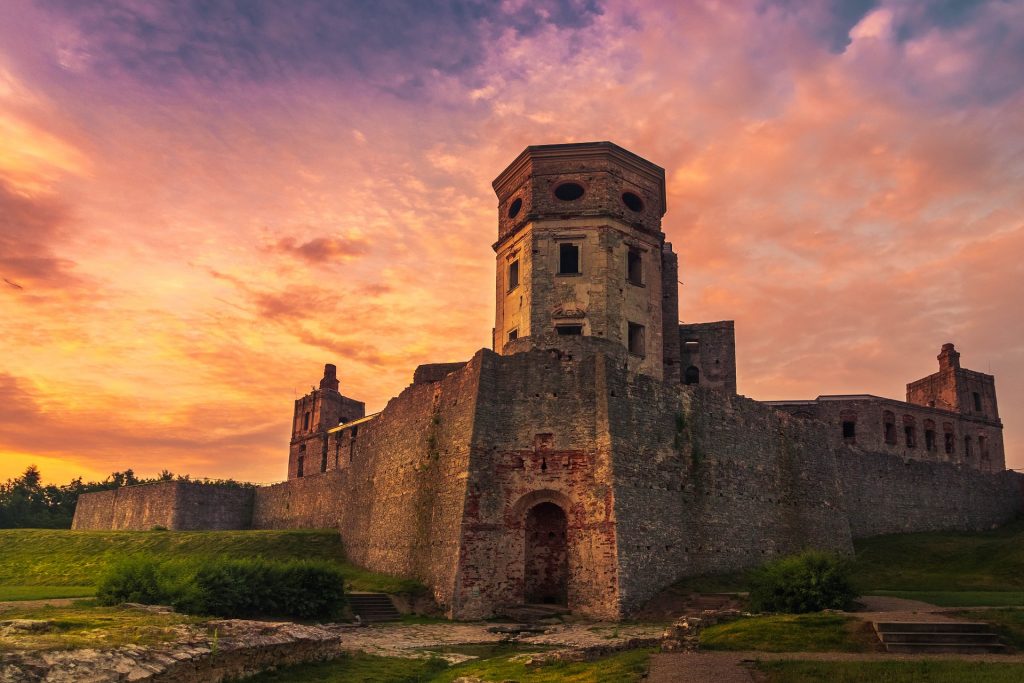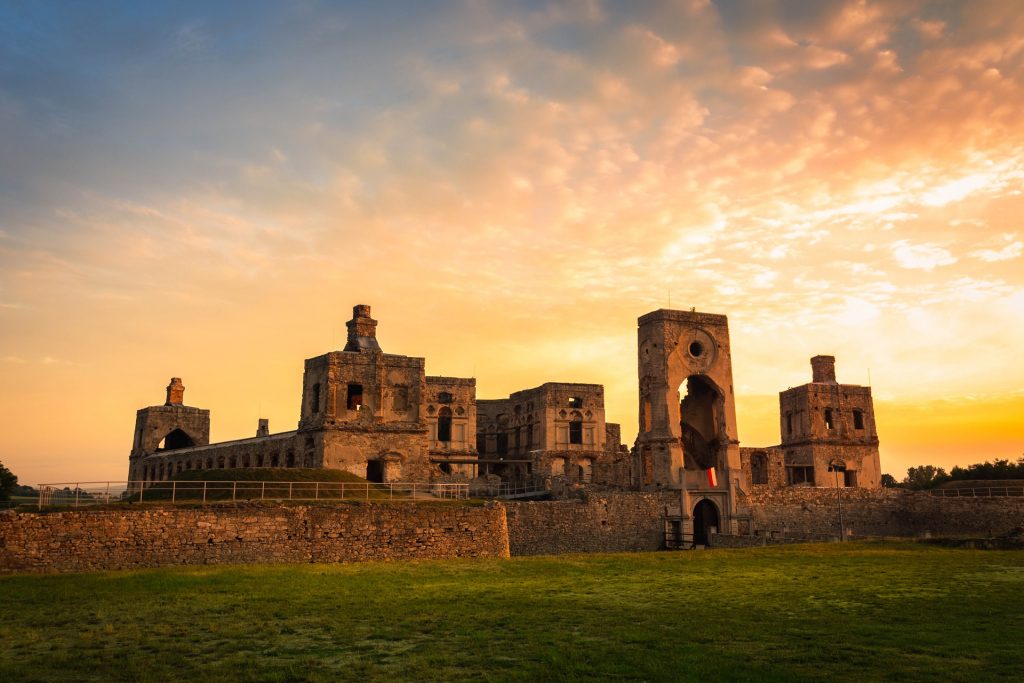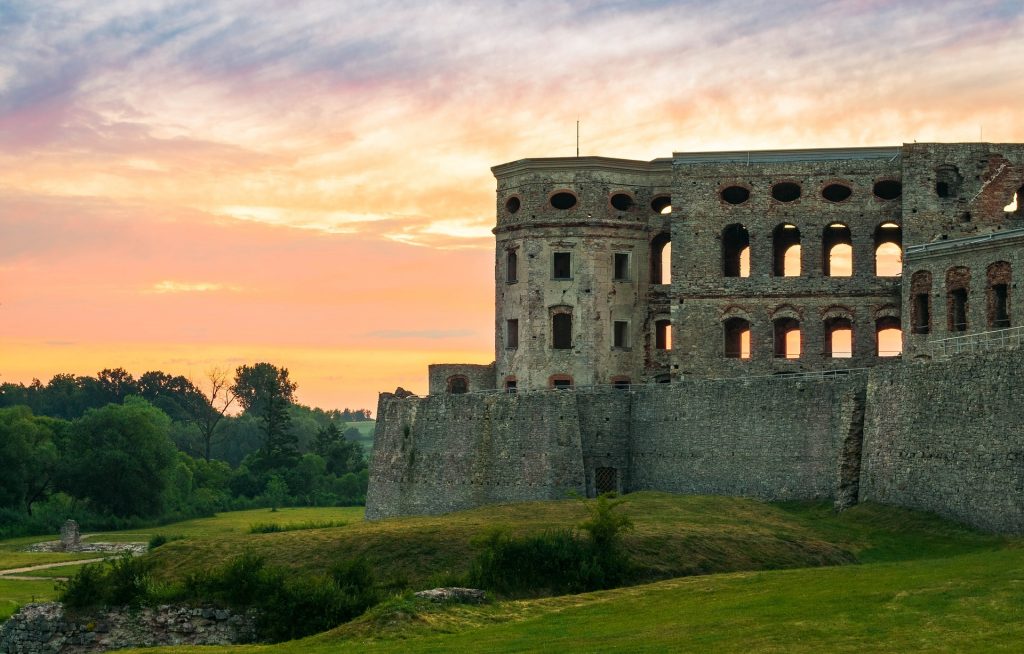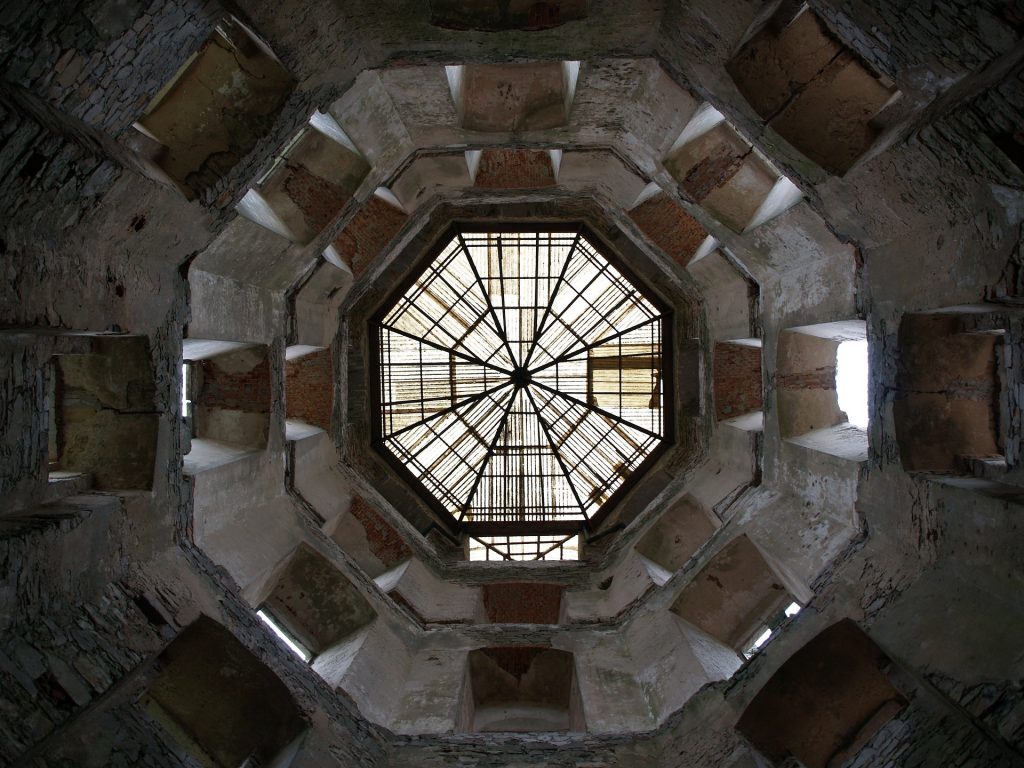What is so amazing about Krzyżtopór Castle in Poland? Posted by Kasia on Apr 24, 2019 in Culture, Places to visit
It is definitely one of the hardest polish words to spell: Krzyżtopór! But don’t let this discourage you! From afar, it looks truly monumental. The kind of castle in which you expect to find a dragon in the cellar!
A magical point on the map of Poland, that it lacks the publicity of Malbork or Wawel. It is situated in the southeastern part of Poland, in one of its least visited regions. On the other hand, the castle turns out to be located not that far from the top tourist destination in the country. Krzyżtopór is 140 kilometers or a two and a half hour drive away from Kraków, the beautifully preserved, former royal capital of the Polish Kingdom.
The castle has a status of a permanent ruin, and it is a unique, although delerict building. It raises interest not only among common tourists, who may suddenly see a huge and unusual shape of the castle amid small hills in the valley of Koprzywianka river. This place is also interesting among numerous explorers of the past, such as: historians, archeologists, ethnologists, as well as modern artists and architects.
The thing that I find very interesting is the architecture of the Krzyżtopór castle. It strictly refers to the Gregorian calendar, which was introduced in Poland in 1582. Reportedly, the castle once had 365 windows (as many as days of the year), 52 rooms (as many as weeks of the year), 12 ballrooms (as many as months of the year) and 4 towers (as many as the seasons). It reflected to the fact that Krzysztof Ossoliński (palace builder) was interested in symbolism and astrology. What is more, he was a student of Jan Mrożek, rector of Kraków Academy, a renowned mathematician and astronomer. Moreover, in the left corner of the gate there is a hieroglyph in the shape of W-letter, which has also a symbolic meaning. It probably derives from Arameic ornamentation and represents the castle’s eternity.
Nowadays, the Krzyżtopór castle is one of the largest ruins of magnate’s residence in Europe. The wealth of architectural solutions, the magnificence and splendor of the interior design, the size and layout of the castle’s gardens, together with defensive values of the stronghold situated on the rock and surrounded by swampy meadows that protected the access to the castle, make the construction almost perfect.
Castle appears in a fascinating new book called Castles of the World by Phyllis Jestice, which examines more than 150 fortifications from across the world, from 5th century fortresses and fairy-tale Alpine wonders to Norman keeps and Samurai strongholds. This book is a beautiful examination of past worlds viewed through castles that continue to enrich the modern landscape. They evoke an imagined age of aristocratic warriors and noble aspirations for which many people still yearn today.
I would love to hear how many of you visited this amazing place?

Build vocabulary, practice pronunciation, and more with Transparent Language Online. Available anytime, anywhere, on any device.







